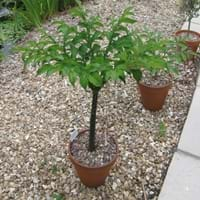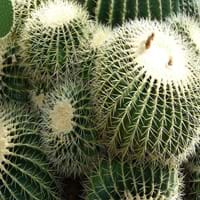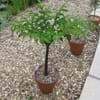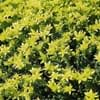Life Span
Perennial
Perennial
Type
Perennial
Cactus or Succulent
Origin
Northeastern United States, Mid-Atlantic United States, Southeastern United States, Central United States, Canada
North America, Southwestern United States, Mexico
Types
Not available
Echinocactus parryi, Echinocactus texensis
Habitat
Mountain Slopes, subtropical regions, Tropical Climate, Warmer regions
Desert, Gravels, Sandy areas
USDA Hardiness Zone
4-9
9-15
Sunset Zone
Not Available
12, 13, 21, 22, 23, 24
Habit
Clump-Forming
Oval or Rounded
Flower Color
Yellow, Orange
Yellow, Magenta
Flower Color Modifier
Not Available
Not Available
Fruit Color
Not Available
Yellow
Leaf Color in Spring
Green
Not Available
Leaf Color in Summer
Green
Not Available
Leaf Color in Fall
Green
Not Available
Leaf Color in Winter
Green, Purple
Not Available
Leaf Shape
bipinnate
Succulent
Plant Season
Spring, Summer, Fall
Spring, Summer, Fall, Winter
Sunlight
Full Sun, Partial Sun, Partial shade
Full Sun, Partial Sun
Type of Soil
Loam, Sand
Loam, Sand
The pH of Soil
Acidic, Neutral, Alkaline
Acidic, Neutral, Alkaline
Soil Drainage
Well drained
Well drained
Bloom Time
Spring, Late Spring, Early Summer, Summer
Late Spring, Early Summer, Summer
Tolerances
Drought, Salt
Drought, Heat Tolerance, Shade areas
Where to Plant?
Container, Ground, Pot
Container, Ground, Pot
How to Plant?
Seedlings, Tuber propagation, Tubers
Seedlings
Plant Maintenance
Medium
Low
Watering Requirements
Requires plenty of water during the growing season, Requires regular watering
Average Water Needs, Do Not over Water, Never Over-water, Requires watering in the growing season, Water when top layer of soil becomes dry
In Summer
Lots of watering
Lots of watering
In Spring
Moderate
Moderate
In Winter
Average Water
Average Water
Soil pH
Acidic, Neutral, Alkaline
Acidic, Neutral, Alkaline
Soil Type
Loam, Sand
Loam, Sand
Soil Drainage Capacity
Well drained
Well drained
Sun Exposure
Full Sun, Partial Sun, Partial shade
Full Sun, Partial Sun
Pruning
Remove damaged leaves, Remove dead branches, Remove dead leaves
Remove damaged leaves, Remove dead leaves, Remove dead or diseased plant parts
Fertilizers
All-Purpose Liquid Fertilizer
fertilize in summer, Potassium
Pests and Diseases
Aphids, Birds
Mealybugs, Spider mites
Plant Tolerance
Drought
Drought, Full Sun, Heat Tolerance, Shade areas
Flower Petal Number
Single
Single
Foliage Texture
Bold
Bold
Foliage Sheen
Matte
Not Available
Attracts
Birds
Insects, Mealybugs, Spider Mites
Allergy
Diarrhea, Excessive flatus, gastro-intestinal problems
Skin cuts
Aesthetic Uses
Not Used For Aesthetic Purpose
Beautification, Landscape Designing, Showy Purposes
Beauty Benefits
Not Available
No Beauty Benefits
Environmental Uses
Air purification
Air purification, Food for insects, Very little waste
Medicinal Uses
Boils, bowel syndrome, cholesterol-lowering, Colic, Digestive, Fiber, Low calories, Piles, Stimulates new cell growth, Weight management and satiety
No Medicinal Use
Part of Plant Used
Corms, Fibre, Root, Seeds, Tuber
Whole plant
Other Uses
Traditional medicine, Used like flour
Decoration Purposes, Showy Purposes, Used as Ornamental plant
Used As Indoor Plant
No
Yes
Used As Outdoor Plant
Yes
Yes
Garden Design
Container, Edible, Feature Plant, Groundcover, Mixed Border, Rock Garden, Wall, Wildflower
Container, Houseplant, Rock Garden, Wall
Botanical Name
OPUNTIA humifusa
ECHINOCACTUS
Common Name
voodoo lily, snake palm, elephant yam
Golden barrel cactus, Golden ball
In Hindi
Konjac
echinocactus
In German
Teufelszunge
echinocactus
In French
Amorphophallus konjac
echinocactus
In Spanish
Amorphophallus konjac
echinocactus
In Greek
Konjac
Echinocactus
In Portuguese
Amorphophallus konjac
Echinocactus
In Polish
konjac
Echinocactus
In Latin
Konjac
Echinocactus
Phylum
Tracheophyta
Tracheophyta
Class
Magnoliopsida
Magnoliopsida
Order
Alismatales
Caryophyllales
Genus
Amorphophallus
Echinocactus
Clade
Angiosperms, Monocots
Angiosperms, Core eudicots, Eudicots
Tribe
Thomsonieae
Cacteae
Subfamily
Aroideae
Cactoideae
Number of Species
Not Available
Importance of Devil's Tongue and Echinocactus
Want to have the most appropriate plant for your garden? You might want to know the importance of Devil's Tongue and Echinocactus. Basically, these two plants vary in many aspects. Compare Devil's Tongue and Echinocactus as they differ in many characteristics such as their life, care, benefits, facts, etc. Every gardener must at least have the slightest clue about the plants he wants to plant in his garden. Compare their benefits, which differ in many ways like facts and uses. The medicinal use of Devil's Tongue is Boils, bowel syndrome, cholesterol-lowering, Colic, Digestive, Fiber, Low calories, Piles, Stimulates new cell growth and Weight management and satiety whereas of Echinocactus is No Medicinal Use. Devil's Tongue has beauty benefits as follows: Not Available while Echinocactus has beauty benefits as follows: Not Available.
Compare Facts of Devil's Tongue vs Echinocactus
How to choose the best garden plant for your garden depending upon its facts? Here garden plant comparison will help you to solve this query. Compare the facts of Devil's Tongue vs Echinocactus and know which one to choose. As garden plants have benefits and other uses, allergy is also a major drawback of plants for some people. Allergic reactions of Devil's Tongue are Diarrhea, Excessive flatus and gastro-intestinal problems whereas of Echinocactus have Skin cuts respectively. Having a fruit bearing plant in your garden can be a plus point of your garden. Devil's Tongue has showy fruits and Echinocactus has no showy fruits. Also Devil's Tongue is not flowering and Echinocactus is not flowering . You can compare Devil's Tongue and Echinocactus facts and facts of other plants too.





